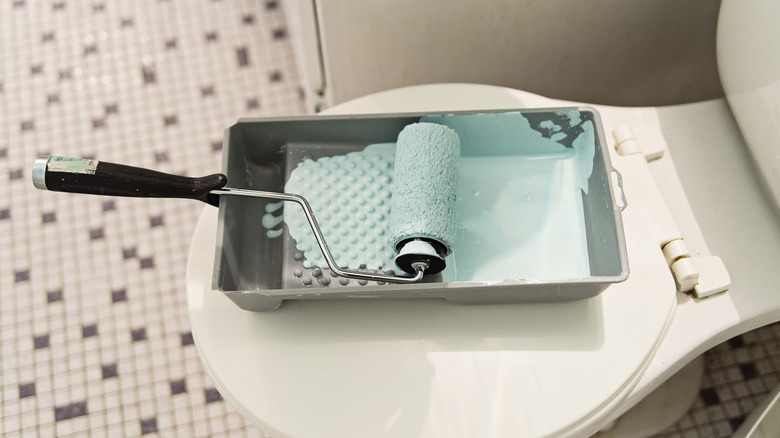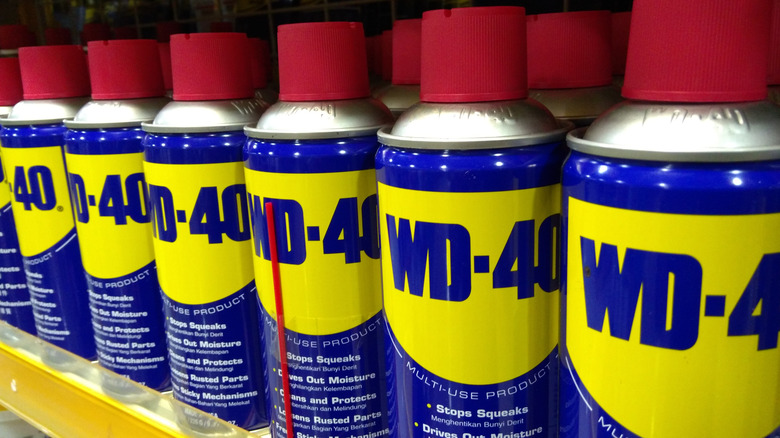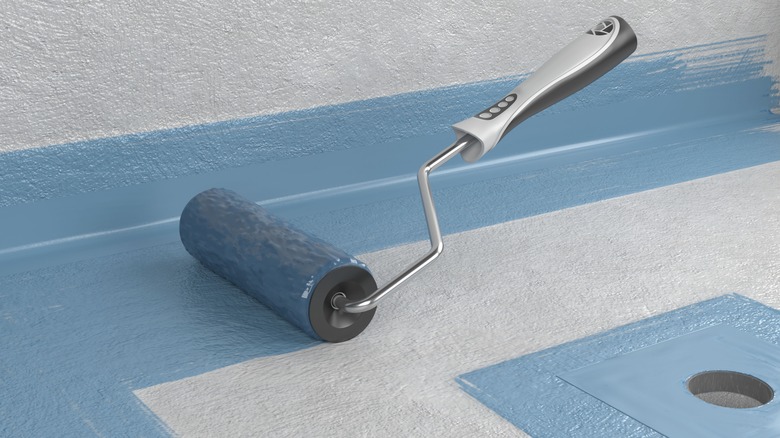Easy Tips To Banish Paint Spills From Bathroom Surfaces
Painting your bathroom might just be the perfect DIY project; not only is it easy to pull off, but it is also a simple way to give this space a facelift on a budget. That being said, there are intrinsic challenges that come with painting (no matter how careful you are), such as how to remove paint that you inadvertently spill. Knowing what approach to take for banishing paint from each type of surface can make your next bathroom painting project far less stressful.
One simple principle to remember is that no matter what surface you're working with, it will always be easier to eliminate a paint spill before it sets. Waiting until the paint dries can result in bigger problems in some cases, as certain substances (such as paint stripper) that may be able to loosen the paint's bond can also damage the surface it adheres to. To remove wet paint that has spilled, try to clean up as much as you can with paper towels first. Next, you'll need to grab a washcloth that you don't mind parting with and dip it in warm, soapy water (dish soap works well), and wipe away the spill, then rinse the cloth if it becomes too saturated with paint. Continue wiping with fresh, soapy water until the paint is fully gone.
Removing paint from synthetic surfaces
Acrylic, fiberglass, and laminate are some of the most popular synthetic surfaces for use in bathrooms thanks to their affordable price point, resilience after years of use, and overall ease of maintenance. While they may seem pretty hard to the touch, when it comes to getting paint stains off of these surfaces, you may notice that certain removal methods — such as vigorous scraping with a razor — are too harsh for their synthetic composition.
To remove paint spills from any of the aforementioned surfaces, beginning with a gentle scraping is a good place to start. Using a plastic scraper or a credit card to try to lift any small paint splatters may work well for laminate, although fiberglass shower cells are often more porous, which may make it difficult to gain a solid grip under the paint. If you are struggling to get the paint to budge, using WD-40 can be a genius tip for removing paint in your house thanks to its ability to break up the strong bonds that make paint stick to surfaces (without causing damage to the surface itself). Begin by spraying the WD-40 on the paint stain, then wait one to three minutes before going in with a rag or plastic scraper to remove the now-loosened paint stain. Follow it up with a thorough wash, using a wet, soapy rag, then a final rinse with water to remove any leftover lubricant.
How to eradicate paint from hard and natural surfaces
Glass, porcelain, and ceramic are all commonly found surfaces in bathrooms; their overall strength and appealing aesthetic makes them a great long-term choice for vanities, floors, shower walls, and more. When paint splatters are found on these harder surfaces, you will generally be able to remove them with a razor blade scraper (you can find a cheap one online) that is held at a flat enough angle to not scratch the surface. If you're queasy about taking a blade to your shiny shower, no one would blame you. In this case, you can use rubbing alcohol, which should easily remove dried paint stains with minimal elbow grease. Simply pour a small amount of alcohol on a cloth, then wipe the paint stain until it rubs off.
WD-40 also can be used on tile or glass surfaces, using the same approach outlined as with laminate or fiberglass. If your shower or bathroom floors are made from natural stone, you will want to exercise extreme caution when trying to remove paint spills; haphazardly scraping the stone or using harsh cleaners can result in irreparable damage. Gentle motions with a razor blade should do the trick, but if the splatter or spill is bad enough, your best bet will be reaching out to a professional company that specializes in caring for natural stone.


